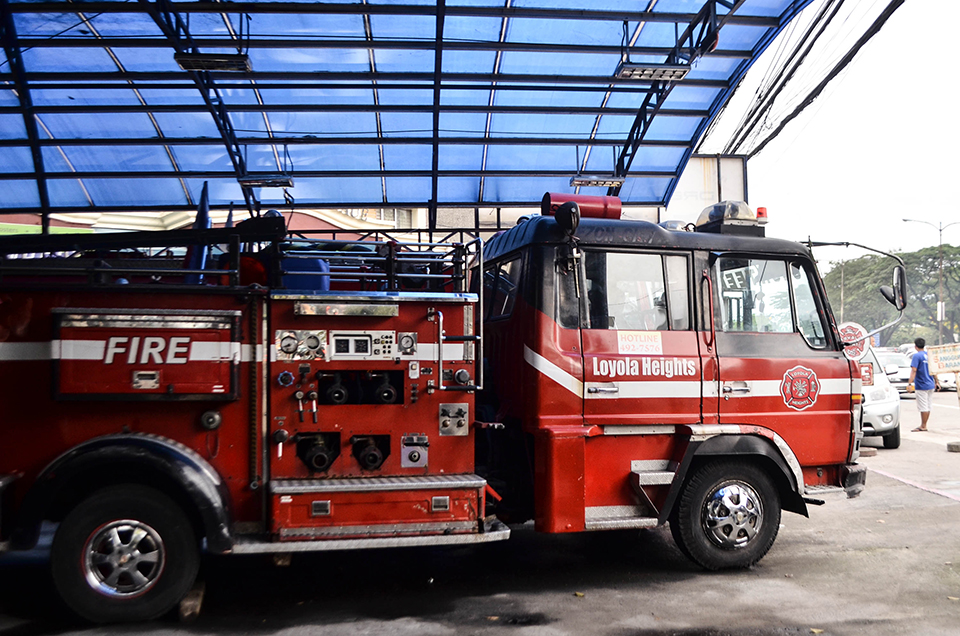On October 15, 2013, a magnitude 7.2 earthquake hit Central Visayas, affecting Bohol and Cebu the most. The effects of the earthquake were worst in Bohol, where not only the area’s physical foundations were decimated but its cultural ones as well. The earthquake was also felt in Masbate in the northern part of Visayas to Cotabato in southern Mindanao.
The total casualties reached 206 as of press time.
Though this earthquake’s catastrophic outcome is one of great proportions, it’s not difficult to imagine this same kind of tragedy befalling the Ateneo. In a 2012 GMA News Online article entitled “The hidden, fractured earth under Metro Manila’s streets,” Jun Obile reported that the Ateneo campus is neighbors with the West Valley Fault, a fault line that runs from “Bulacan in the north and all the way down to Tagaytay Ridge in the south.”
Additionally, on October 18, 2013, an article by Atom Araullo for ABS-CBN News entitled “Ateneo buildings on top of West Valley Fault” reported that three of the Ateneo’s buildings sit directly on the fault line.
The Greater Metro Manila Area Risk Analysis Project also estimates 37,054 casualties and P2.4 trillion in damages in the event of a magnitude 7.2 earthquake along the West Valley Fault.
In light of the significant damage caused by the Bohol quake in the region, what is the Ateneo doing to prevent Bohol’s fate from befalling us?
Response to emergency
The 7.2 magnitude earthquake took Bohol by surprise, especially since the fault line that caused it was previously undiscovered. The province was largely unprepared for an earthquake of that magnitude, which made it all the more difficult to recover.
Given the extensive damage, numerous organizations have committed to aiding Bohol in its recovery. The Department of Social Welfare and Development released P10 million worth of relief goods for the affected families. The National Commission for Culture and the Arts, the National Historical Commission of the Philippines and the National Museum have also committed themselves to restoring the ten heritage churches that were damaged by the quake.
On October 18, 2013, in an article entitled “Rescuers struggle to find Bohol quake victims,” The Philippine Star reported that survivors took refuge in “government-run shelters in public buildings or in tents beside their homes.” Closer to home, the Ateneo de Manila University Disaster Response and Management Team called for monetary donations.
Despite all these relief efforts, regional civil defense chief Minda Morante also admitted to The Philippine Star that there have been gaps in the emergency response. Morante says, “We cannot address the many needs all at the same time.”
Assessing the threat
Because Bohol was unprepared for such a strong earthquake, there was a scramble for relief after. To prevent the same fate, preparations for earthquakes have been underway in Quezon City.
The West Valley Fault is active, although it only moves every 200 to 400 years. The last time the fault moved was 200 years ago, meaning it may or may not move in the near future. What does this mean for the Ateneo?
The Ateneo’s official statement regarding its campus’ position relative to the fault states that it will not be isolated in incurring damage should an earthquake occur. However, the school may still be among the areas that get damaged the most. “The University wishes to clarify that the school buildings are not sitting on the fault line. However, as explained by Philvolcs (Philippine Institute of Volcanology and Seismology), all environs within five kilometers of the fault line are expected to experience much shaking in the event of a magnitude 7 earthquake,” the statement reads.
At the very least, the Ateneo administration seems to be taking things seriously. The statement details some of the steps the administration plans to take, such as structural audits. The statement also explains that “buildings constructed from 2001 onwards have been designed to withstand more severe conditions.”
These details, however reassuring they may be, are moot if they do not translate to action on the ground. For now, it remains to be seen if plans such as “more specialized guidelines and drills for different sectors and age levels” and “preparations for a recovery program, such as communication, relief, and support systems” will ever come to fruition. However, preparations are being made.
To its credit, the Ateneo has successfully conducted such drills over the past few years. Although, the Loyola Schools’ drill last year was jeopardized by the suspension of classes, the Ateneo High School was able to conduct its own drill in January 2013, complete with the classic duck-cover-hold maneuvers, special sound effects, and fake victims. The Loyola Schools had earthquake and fire drills on February 20, 2013.
While the infrastructure of the Ateneo campus may survive strong earthquakes and while there is talk of more preparations being done in the future, there is still a long way to go before total preparedness is attained–and an even longer way to go before earthquake preparedness is manifested in other ways besides drills.
Attitude problem
On that note, another key preparation is getting people to take the threat of an earthquake seriously. More often than not, the attitudes of the people can break even the best calculated of contingency plans. Unfortunately, some people do not give much weight to the threat of earthquakes.
Although many engineers and seismologists have consistently warned of a powerful earthquake striking Greater Manila and the surrounding provinces, building codes—already considered to be inadequate by some disaster specialists—continue to be routinely ignored in the name of cost-cutting and profit-taking.
For Ateneans, there is no clearer proof of this than the 42-storey apartment building a few blocks beside the campus—SM Blue. The building, allowed to rise by an exemption of the city zoning scheme, sparked much backlash from the Ateneo and Loyola Heights communities. Many questioned how such a tall building was allowed to go up so near to the West Valley Fault. The Ateneo administration in particular questioned why the Quezon City Council did not even deliberate on the exemption before granting it.
Despite all of these concerns, however, nothing was done to stop the construction of the building. The City Council balked at revoking the exemption, fearing that doing so would cause Shoe Mart Development Corporation (SMDC) to sue them. Today, the condominium stands more or less complete, having topped off late last year.
The SM Blue issue shows more than just corporate and governmental recklessness.
Although many Ateneans were indignant at the actions of both the Quezon City government and SMDC, much of that indignation stemmed from the increase in traffic that SM Blue might cause. The issue of proximity to the West Valley Fault, for the most part, was sidelined.
The repeated warnings of seismologists and other experts seem to have caught some individuals’ interest, though. With the Bohol earthquake and the media reports of parts of the Ateneo lying directly on the fault zone, Ateneans have started discussing the issue on social networks—although such discussions are still sporadic and confined to certain interest groups.
In the Ateneo’s official statement regarding the university’s preparedness for earthquakes, it is mentioned that Architect of the Disaster Mitigation Education in Japan Mr. Seiji Suwa believes “preparedness translates to good building construction, scientific understanding of the possible event, a well-designed recovery program and well-prepared citizens.” However, it seems that the school has only visibly achieved two of these things.







